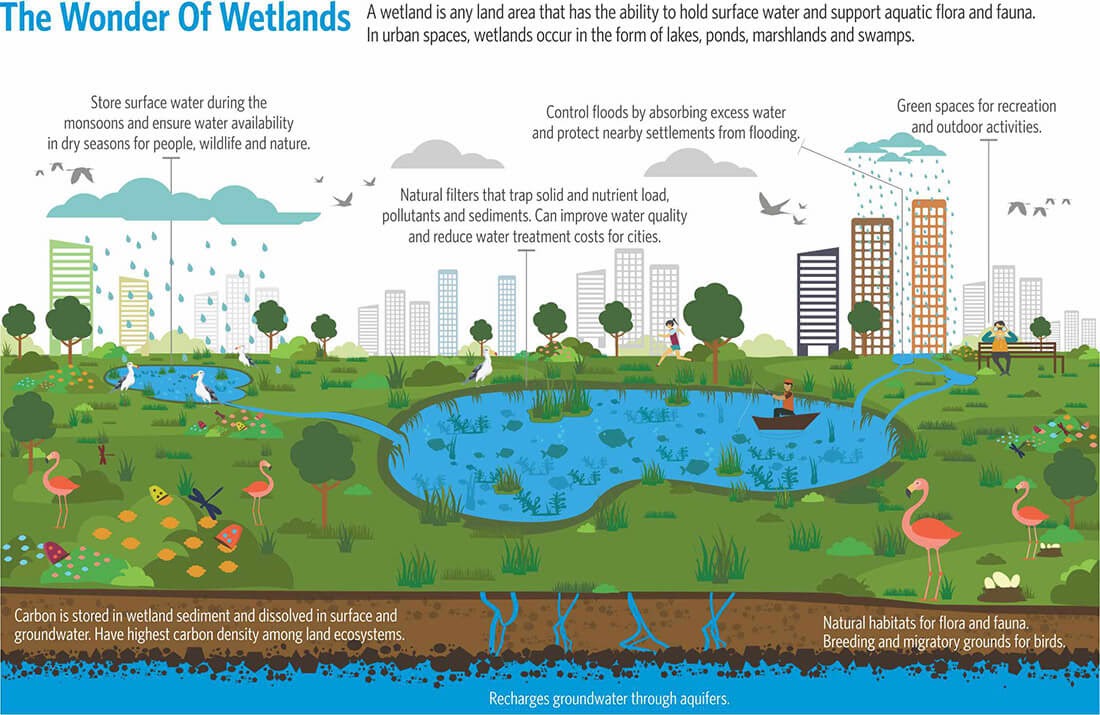Being a Chennaite, I have been to the OMR quite often. Whenever I cross the Pallikaranai 200 feet Road towards Velachery Main Road, it’s hard to escape the foul odour emanating from the Perungudi dumpyard. To the left of the road lies the dumpyard and to the right is the marshlands, home to some beautiful, colourful migratory birds, several of which are endangered, as the sign boards along the road tell me. Until recently, I believed that Pallikarani was a wasteland, which therefore served as a dumpyard, used to dump waste from different parts of Chennai and that all these birds were opportunistic feeders, feeding off the rubbish.
It was after joining CAG, as part of the solid waste management project I am working on, that I had an opportunity to know the truth behind Chennai’s wetlands which had been repurposed as dumpyards. During my research, I came to know that the land used for the Kodungaiyur dumpyard was also originally a marshland. This saddens me incredibly. How horrible and irresponsible are we to destroy our beautiful marshlands with no thought to the consequences of our actions?
The Chennai city comprises of five wetlands, namely, Pallikaranai Marsh, Pulicat Lake, Madhavaram & Manali Jheels, Kattupuli Island and Adyar Estuary Creek. So, what are wetlands? And how are they being slowly destroyed in Chennai?

The Kodungaiyur dumpyard also has a similar history. Once a marshland this was also destroyed by the construction of sewage treatment plants and by the dumping of garbage. The destruction of this marsh has been abetted by missing documents and records that should have been maintained by the government.
However, that Kodungaiyur had a very different start to its life, and that it was once a beautiful nature reserve is a story that some Kodungaiyur residents will still tell. In fact, the destruction began only around the 80s.
Kodungaiyur dumping ground situated in the North of Chennai was 400 acres of beautiful alluvial plain land with huge, lush grass cover. But our ‘use and throw’ lifestyles began generating large amounts of waste. This waste had to go somewhere. The final destination for this waste was picked by the government itself - it was to be this beautiful and exceptional wetland. Residents look back fondly at those years when the surrounding areas were green, with cattle grazing on it. It was a seasonal flood-prone alluvial lowland of the Kosasthalaiyar river in Kodungaiyur. Many species of flora and fauna peacefully co-existed alongside small residential clusters in the surroundings of Kaviarasu Kannadasan Nagar, Krishnamurthy Nagar and MKB Nagar. Till the 80s, Kodungaiyur and its surroundings were a retirement haven, a well earned rest, as well as a sanctuary for nature enthusiasts. There was no water crisis, air pollution or any other environmental threats. Those were nostalgic years when you could find boats sailing on the crystal clear Buckingham Canal, and when floods percolated through dedicated flood carriers like the Captain Cotton Canal; not on the streets or roads. But the injudicious invasion of garbage and sewage plants into the alluvial plain land has made it a nightmare for the people of Kodungaiyur.
Let's get into the history of dumping in Kodungaiyur. In 1985, the civic body started dumping 20 tonnes of waste per day and in 1989 the first sewage treatment plant (STP) was built on the fodder farm land. These combined factors started the destruction of the Pulpannai (turf). In a matter of years, the lush green Pulpannai had turned into a brown revolting kuppai medu (garbage hill) and which now carries the burden of Chennai’s enormous waste.
